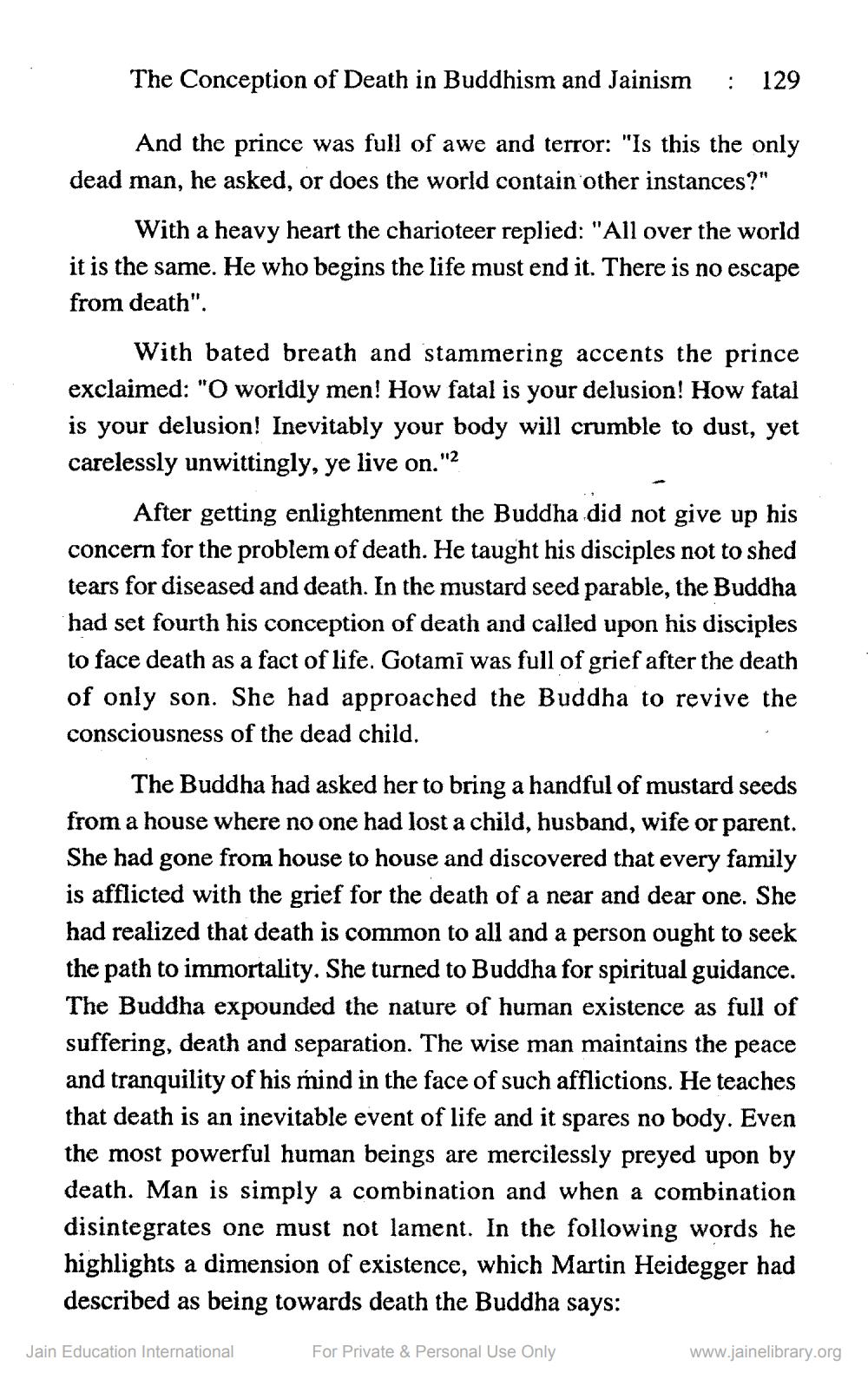________________
The Conception of Death in Buddhism and Jainism
: 129
And the prince was full of awe and terror: "Is this the only dead man, he asked, or does the world contain other instances?"
With a heavy heart the charioteer replied: "All over the world it is the same. He who begins the life must end it. There is no escape from death".
With bated breath and stammering accents the prince exclaimed: "O worldly men! How fatal is your delusion! How fatal is your delusion! Inevitably your body will crumble to dust, yet carelessly unwittingly, ye live on."?
After getting enlightenment the Buddha did not give up his concern for the problem of death. He taught his disciples not to shed tears for diseased and death. In the mustard seed parable, the Buddha had set fourth his conception of death and called upon his disciples to face death as a fact of life. Gotami was full of grief after the death of only son. She had approached the Buddha to revive the consciousness of the dead child.
The Buddha had asked her to bring a handful of mustard seeds from a house where no one had lost a child, husband, wife or parent. She had gone from house to house and discovered that every family is afflicted with the grief for the death of a near and dear one. She had realized that death is common to all and a person ought to seek the path to immortality. She turned to Buddha for spiritual guidance. The Buddha expounded the nature of human existence as full of suffering, death and separation. The wise man maintains the peace and tranquility of his mind in the face of such afflictions. He teaches that death is an inevitable event of life and it spares no body. Even the most powerful human beings are mercilessly preyed upon by death. Man is simply a combination and when a combination disintegrates one must not lament. In the following words he highlights a dimension of existence, which Martin Heidegger had described as being towards death the Buddha says:
Jain Education International
For Private & Personal Use Only
www.jainelibrary.org




